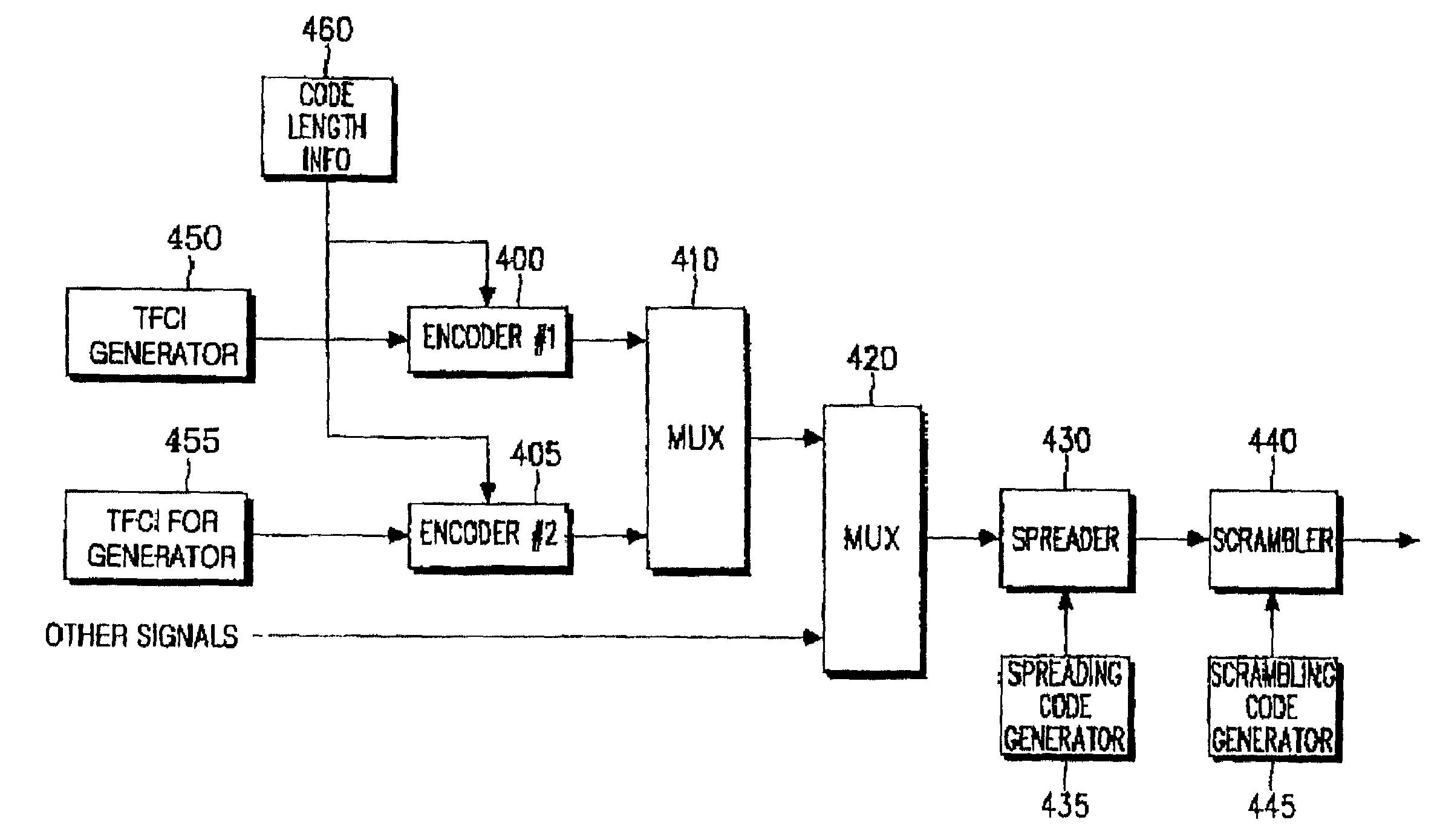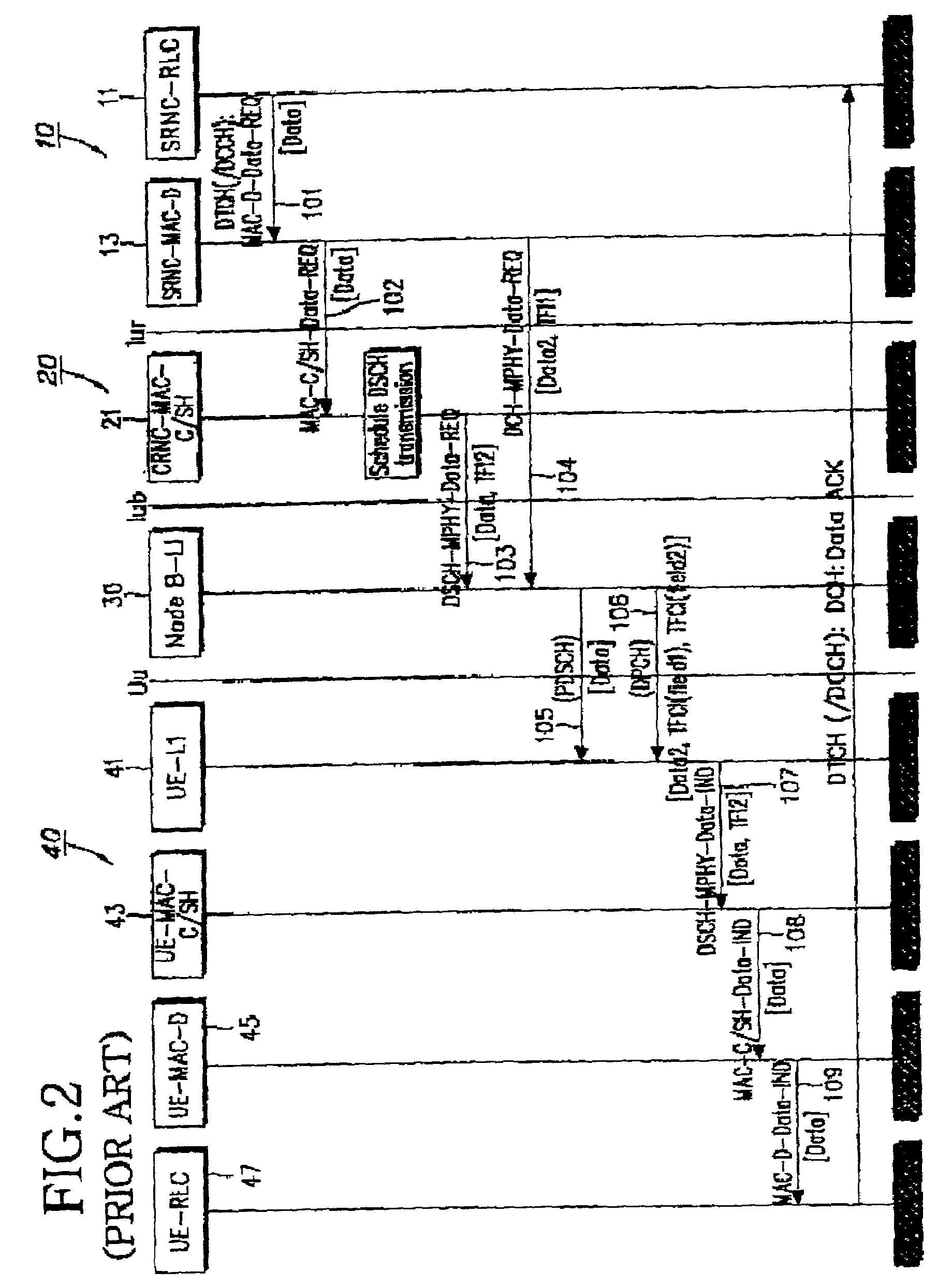Apparatus and method for coding/decoding TFCI bits in an asynchronous CDMA communication system
a communication system and asynchronous technology, applied in the field of cdma mobile communication system, can solve the problems of increasing delay and inability to use hard split methods, and achieve the effect of simplifying calculations
- Summary
- Abstract
- Description
- Claims
- Application Information
AI Technical Summary
Benefits of technology
Problems solved by technology
Method used
Image
Examples
first embodiment (
Decoder)
[0111]FIG. 7 illustrates a detailed structure of the decoders 600 and 605. Referring to FIG. 7, received symbols r(t) are provided to the zero inserter 700, and at the same time, code length information is provided to the controller 770. The controller 770 stores puncturing position information based on a code length of the received symbols, and provides the stored puncturing position information to the zero inserter 700. For example, the controller 770 provides the zero inserter 700 with information on 29 puncturing positions for a coding rate (3,1), information on 26 puncturing positions for a coding rate (6,2), information on 23 puncturing positions for a coding rate (9,3), information on 20puncturing positions for a coding rate (12,4), information on 14 puncturing positions for a coding rate (18,6), information on 11 puncturing positions for a coding rate (21,7), information on 8 puncturing positions for a coding rate (24,8), and information on 5 puncturing positions for...
second embodiment (
Decoder)
[0112]FIG. 14 illustrates a structure of the first and second decoders 600 and 605 of FIG. 6. Referring to FIG. 14, coded symbols r(t) received from the encoder are provided to a zero inserter 1400, and at the same time, information on a code length used by the encoder is provided to a controller 1430. The controller 1430 stores information on puncturing positions in association with the code lengths available for the encoder, and provides control information stored therein in association with the code length information to the zero inserter 1400. The code length information indicates the code length or the coding rate used in the encoder, while the control information indicates the puncturing positions. The puncturing positions represent the positions of the symbols pruned to obtain a desired coded symbol length corresponding to the bits received from the encoder. For example, Table 5 illustrates the puncturing positions stored in association with the code lengths.
[0113]
TAB...
PUM
 Login to View More
Login to View More Abstract
Description
Claims
Application Information
 Login to View More
Login to View More - R&D
- Intellectual Property
- Life Sciences
- Materials
- Tech Scout
- Unparalleled Data Quality
- Higher Quality Content
- 60% Fewer Hallucinations
Browse by: Latest US Patents, China's latest patents, Technical Efficacy Thesaurus, Application Domain, Technology Topic, Popular Technical Reports.
© 2025 PatSnap. All rights reserved.Legal|Privacy policy|Modern Slavery Act Transparency Statement|Sitemap|About US| Contact US: help@patsnap.com



